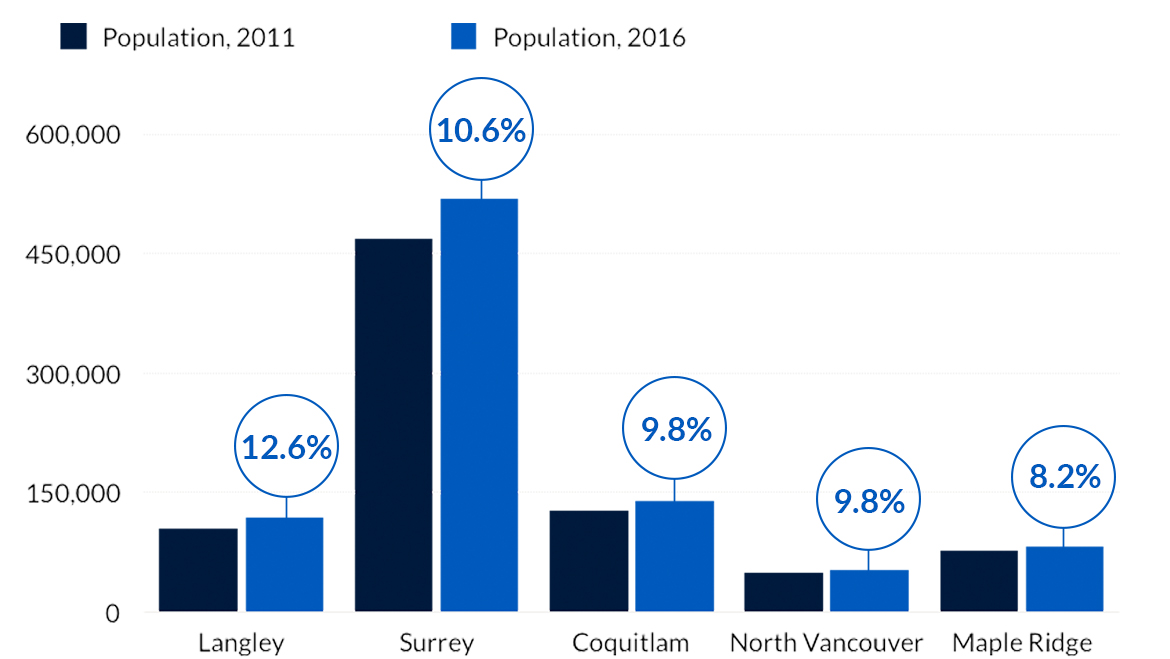Top 5 Fastest Growing Cities in the Lower Mainland
Feb 27, 2017
Written by
Ryan BerlinSHARE THIS
It’s no secret that Vancouver is one of the most expensive cities in the world. With increasing prices in Vancouver proper, the trend of young families moving out to the suburbs continues with an appealing value proposition of more space for less money. But which suburb should you choose?
According to the latest 2016 Census reports, the fastest growing city in the Lower Mainland is Langley with the top population increase at 12.6%, from 104,177 in 2011 to 117,285 in 2016. Runners up in population growth are Surrey, Coquitlam, North Vancouver, and Maple Ridge. The national Census report examines Canada’s population every five years and offers a wide range of analysis, data, reference and geographical information according to topics that paint a portrait of Canada and its population. It measures key performance indicators such as population, population change, population density and private dwellings.

Measured by population growth, the top 5 of the fastest growing cities in the Lower Mainland are: LangleyPopulation 117,285 (up 12.6% from 2011)SurreyPopulation 517,887 (up 10.6% from 2011)CoquitlamPopulation 139,284 (up 9.8% from 2011)North VancouverPopulation 52,898 (up 9.8% from 2011) Maple RidgePopulation 82,256 (up 8.2% from 2011) Looking for a new home in Langley, Surrey, Coquitlam, North Vancouver or Maple Ridge? Our rennie advisors specialize in every neighbourhood across the Lower Mainland and can help you find the home best suited to you.*All information provided is deemed reliable, but is not guaranteed and should be independently verified. E&OE.
Written by
Related
Greater Victoria experienced a bump in sales in October, and activity moved closer to long-run average levels. A look at the months of inventory metric across the region shows great diversity in supply-demand conditions geographically and across home types.
Nov 2025
Report
The 2025 federal budget may have included piles of new spending and initiatives, but there were few with respect to housing. On its own, it will do little to improve housing affordability or stimulate new construction.
Nov 2025
Article